ClickTime Releases New Resource Management Dashboard
Table of Contents
This month, ClickTime is excited to release a new dashboard in Resource Management – our tool that helps leaders allocate and assign people to projects. Designed to help managers gain instant visibility into a month’s progression towards plan, users can refer to the dashboard as a real-time source of truth. Instead of spending hours combing through spreadsheets, stakeholders can now find the precise information they need in one convenient spot.

Stephanie Johnson, Senior Product Manager
Senior Product Manager, Stephanie Johnson, discusses the specific benefits below. Read more to discover how this new feature will help clients better understand the health of their project portfolios, show how well their workforce is utilized, and identify any profitability risks.
Q: Tell us why the team chose to create a new dashboard in Resource Management. What problem does the dashboard solve?
Stephanie: We created the dashboard to provide clients with a quick way to measure progress toward their monthly plan. There’s nothing worse than getting to the end of the month and realizing that your progress deviated so much that it negatively impacted your profitability goals. You’re left frustrated—if only you had known that your team was veering off course, you could have stepped in.
Our clients asked for a high-level overview of their in-flight projects and workforce to gain that real-time visibility. Like a car’s dashboard, it signals to you in real-time that you may have a problem. For example, it identifies profitability risks by showing you whether your team is on pace to meet its financial goals. Armed with this information, you can then make any necessary adjustments to the work in progress.
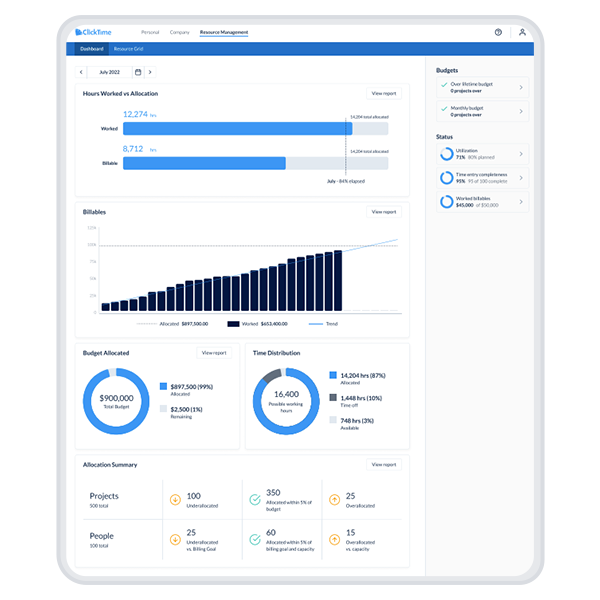
Resource Management Dashboard
Q: What information is shown on the dashboard?
Stephanie: Most of our clients closely monitor their profit margins—especially during inflation as costs continue to rise. During a challenging month, there could be a very thin line between success and failure. When that’s the case, metrics such as billing goals, utilization rates, and budget variances need to track closely to plan. The dashboard shows leaders the moment those numbers start to lag. If progress towards your profitability goals begins to look uncertain, that’s your cue to start digging deeper.
Q: So if the dashboard signals that you’re not tracking to plan, how do you determine what’s amiss? What’s the next step?
Stephanie: I would start by looking closely at my team’s allocations—the project hours they’ve been assigned. For example, say you’ve allocated an account executive 12 hours per month to service a blue-chip account. But it’s mid-month, and they’ve already worked 35 hours. The dashboard will highlight this variance so you’ll know it’s time to investigate. Maybe the plan wasn’t adequately scoped, or overservicing is happening. Either way, if you know about the issue early, you’ll have a better chance of fixing the problem.
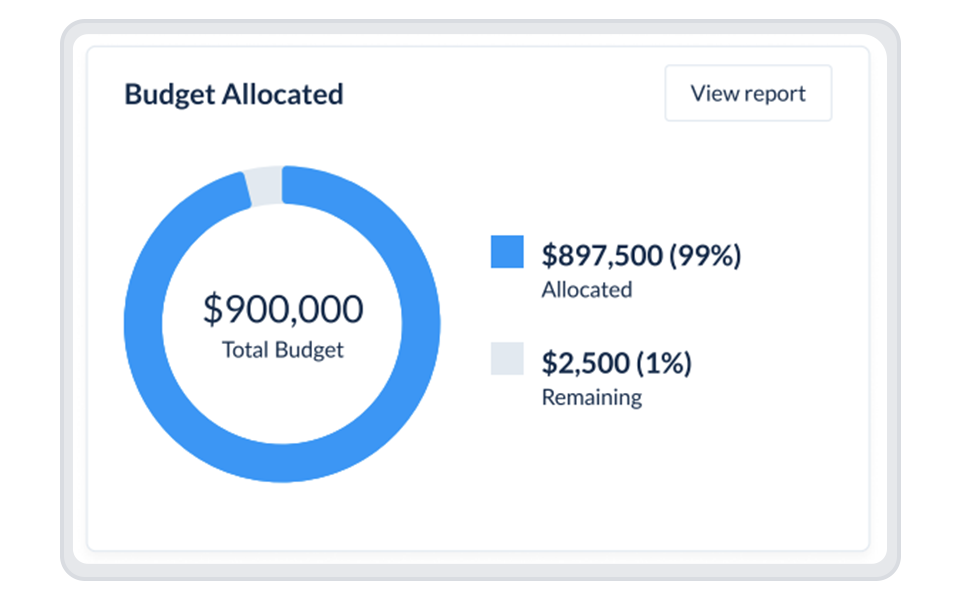
Easily track your allocated budget
On the flip side, if the dashboard shows that the team isn’t hitting their billing goals, it could indicate that some employees are under-allocated or that the business doesn’t have enough incoming work. If this is the case, you might want to examine your workforce and ensure that you have right-sized your staff. You’re more apt to hit your profitability goals when the incoming work aligns neatly with your available resources and their capacity restraints.
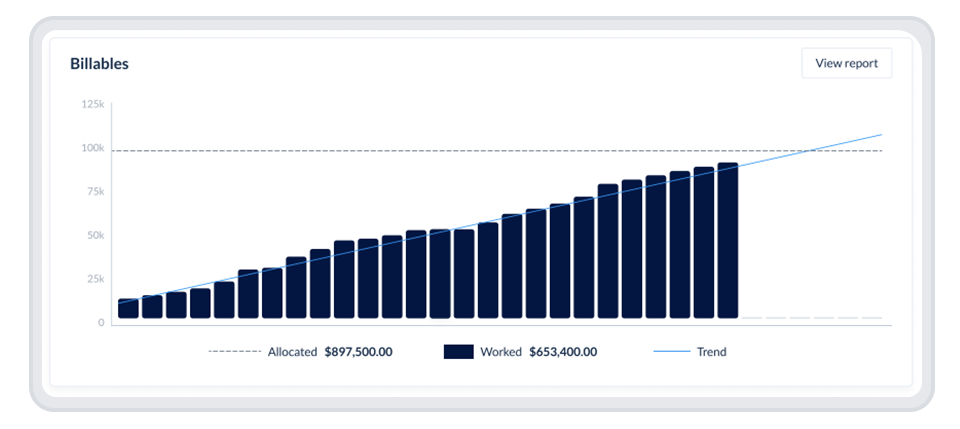
Monitor your billables
Q: Which roles on the team do you envision using the dashboard the most?
Stephanie: The dashboard will be used by various folks in an organization for different reasons. Depending on their role, some will need to be deeper in the weeds than others. When our Product Team considered who we were building this feature for, three main roles stood out to us:
Those who manage people – These will be your functional team leaders, gauging the progress of their staff. Are they being appropriately utilized? Are they hitting their billing goals? The dashboard will be a quick place for people managers to determine whether their team is being deployed correctly.
Those who manage deliverables – These are the folks who come in from the client side of the house. For example, it could be an account executive responsible for fostering a client relationship. They’ll be looking at the dashboard and asking themselves: Is the work on budget? Are the project goals being met? Are the needs of the project being satisfied over time?
Those who are executives – This group includes finance executives or members of the C-Suite who require a holistic view of the organization. They’ll be looking at the dashboard and analyzing whether the plan is correct, determining whether the team has achieved its KPIs, and ensuring the organization meets its financial goals.
Q: How often do you expect stakeholders to access the dashboard?
Stephanie: Most management roles will check the dashboard regularly. Once a week is a common cadence, and midway through the month. By halfway through the month, you can determine whether the budget allocated is being used as predicted in the plan. If there’s a large delta between the plan, the budget, and the progress, it could indicate that you may be running into trouble. But the good news is that you likely still have time to make adjustments by mid-month.
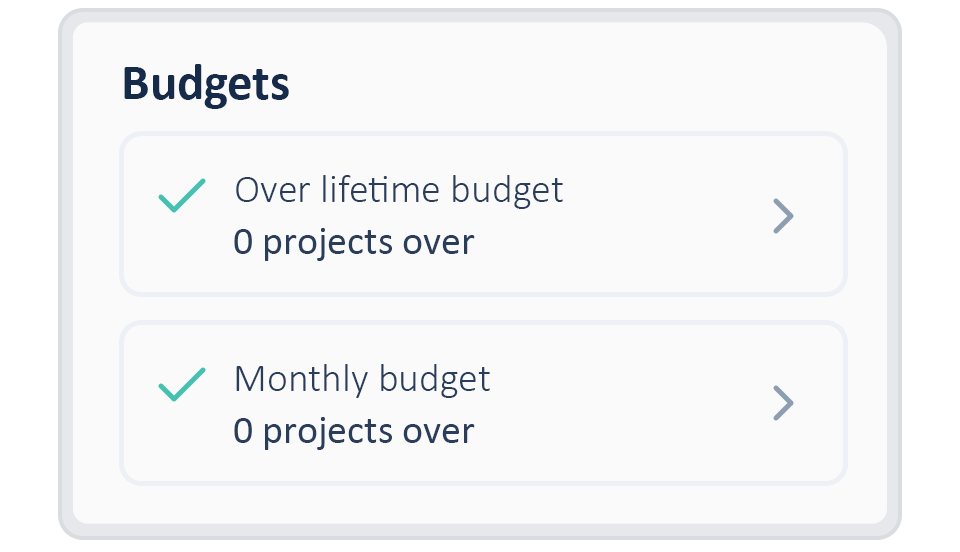
Track lifetime and monthly budgets
Q: What are you and the team most excited about regarding the dashboard?
Stephanie: There are genuinely a lot of benefits. Business leaders are always looking for ways to solve problems, but the first step is being able to identify them. I’m really excited that this dashboard makes it easy to spot sub-optimal behaviors in both planning and working to plan. Gaining a deeper understanding of trends over time is essential for adjusting more deeply ingrained inefficiencies.
For example, you can analyze the month’s revenue, how employee time was allocated, and the resulting profit margins. It’s a fantastic tool because it shows you where those numbers landed at a glance. You can then use that information to plan and train your team based on the deficits.
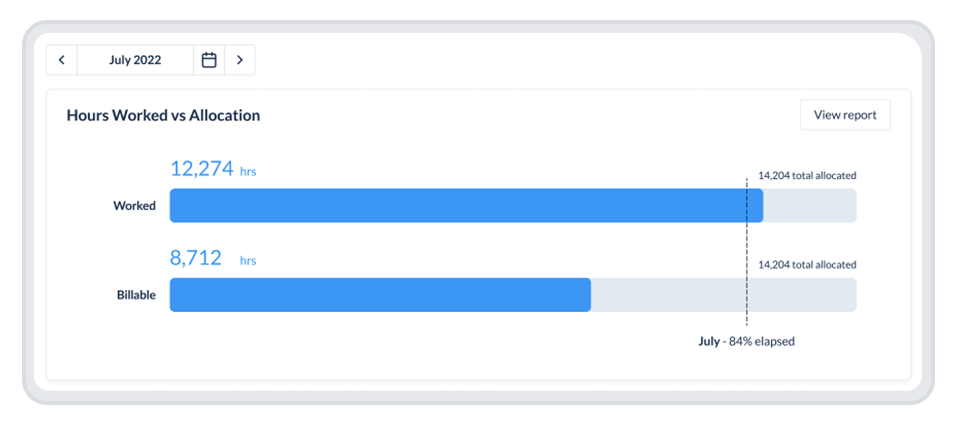
View hours worked versus hours allocated
Q: How does this new feature fit into the long-term roadmap for ClickTime?
Stephanie: Today, we see this dashboard as an excellent tool for monitoring in-flight work and for surfacing operational trends. Next, we’re excited about growing our capabilities in predictive visibility and intelligent forecasting. When clients can create optimized forecasts they can better utilize their people and their projects. And ultimately, they’re more apt to reach their financial goals. Down the road, we’re interested in exploring more future-focused capabilities.
Here at ClickTime, we’re all incredibly excited about Resource Management’s potential. As the feature evolves, we’re confident it’s going to help our clients plan, manage, and invest their most important asset—their time.






